Maan News Agency | March 16, 2013
Follow @MaanNewsAgency
![208348_345x230[1]](https://occupiedpalestine.files.wordpress.com/2013/03/208348_345x2301.jpg?w=588) BETHLEHEM (Ma’an) — The father of Rachel Corrie on Friday called for justice from Israel, a day before the tenth anniversary of his daughter’s death.
BETHLEHEM (Ma’an) — The father of Rachel Corrie on Friday called for justice from Israel, a day before the tenth anniversary of his daughter’s death.
Rachel Corrie, 23, was killed by an Israeli army bulldozer in the Gaza Strip on March 16, 2003, while trying to prevent the Israeli army from demolishing Palestinian houses.
Official Israeli investigations, criticized by human rights groups, have ruled that her death was an accident and no action would be taken against Israeli military personnel.
Her father Craig Corrie, writing in The Hill newspaper on Friday, said that “President Obama should refuse to continue US military and diplomatic support until Israel gives truthful answers to our questions, not just for US citizens like Rachel and Furkan Dogan, but for all the civilians killed or maimed using US-funded weapons.”
He called on Obama, due to visit both Israel and Palestine this week, to “explain that the US will no longer support financially or diplomatically the apartheid system embodied in the occupation of Palestine and in the treatment of Palestinian citizens of Israel.”
President Obama must use his upcoming trip to remind the world that Americans believe all people are “created equal” and entitled to the rights of “life, liberty and the pursuit of happiness.”
Israel court dismisses case
In 2010, Cindy and Craig Corrie launched a civil suit against Israel seeking a symbolic $1 in damages for the death of their daughter Rachel. Their case accused Israel of intentional and unlawful killing and failing to investigate.
Last August, an Israeli judge dismissed the suit and said Israel was not to blame for any “damages caused” as they occurred during wartime.
The judge said Corrie’s death was a “regrettable accident,” and added that she “did not distance herself from the area, as any thinking person would have done.”
Democrat Brian Baird of Washington, a retired 6-term congressman who represented Rachel Corrie’s district, said following the verdict that the trial was undermined by Israel’s failure to conduct a transparent investigation into the 2003 killing.
“Sadly, as I’ve come to understand, this is standard operating procedure” for many complaints alleging Israeli military misconduct, he said. “The case was dismissed without proper consideration.”
Former US President Jimmy Carter said after the verdict that the “killing of an American peace activist is unacceptable,” while Amnesty International said the verdict “continues the pattern of impunity for Israeli military violations against civilians and human rights defenders in the Occupied Palestinian Territories.”
A spokeswoman for the Corrie family told Ma’an last May that the investigation by Israeli military police into Rachel’s death had been “careless and shoddy,” as well as emotionally taxing for the family.
Israeli soldiers had signed testimonies about the events and then couldn’t remember them in court, the spokeswoman said, adding that the driver of the bulldozer that killed Rachel did not remember her name in court, or the date of the incident.
“Rachel was a human being and we as her family deserved accountability,” Cindy Corrie said last year. “The (Israeli) state has worked extremely hard so that the truth behind what happened to my daughter is not exposed.”
Rachel Corrie’s death made her a symbol of the second intifada, with Palestinians expressing widespread sympathy.
All Israeli Attacks – Timeline | All Israeli cease Fire Violations – Timeline
FACTSHEET | THE KILLING OF RACHEL CORRIE – 10 YEARS ON

The IMEU | March 15, 2013
Follow @theIMEU
Background
- Rachel was born to Cindy and Craig Corrie on April 10, 1979, in Olympia, Washington. She was the youngest of three children in the family. From an early age, she displayed a concern for social justice and those less fortunate than her. Her personal interests included playing soccer and the poetry of Pablo Neruda.
- After graduating from high school, Rachel studied art at Evergreen State College in Olympia, where she became involved in peace activism and worked with a group called Olympians for Peace and Solidarity. For a senior class project, she proposed spending a year in Palestine, where she could meet with and learn from Palestinian activists and develop a sister city program between Olympia and Rafah, a border town in the Gaza Strip.
- Through Olympians for Peace and Solidarity, Rachel became involved with the International Solidarity Movement (ISM), a Palestinian-led group of international activists dedicated to protesting Israeli human rights abuses, including the destruction of Palestinian homes, using nonviolent direct action. In late January 2003, amidst the violence and repression of the second Palestinian uprising against Israel’s then more than 35-year-old military occupation, Rachel traveled to the occupied territories as a volunteer with the ISM.
Rachel in Gaza
- On January 22, 2003, Rachel arrived in occupied East Jerusalem. The next day she traveled to the West Bank for a two-day training session at the ISM’s headquarters, which involved advice on how to avoid injury during nonviolent direct actions that were planned. The main mission of Rachel and the other ISM volunteers was to act as human shields for Palestinian civilians in Rafah, who regularly came under fire from Israeli soldiers, and to prevent the destruction of Palestinian homes and infrastructure such as water wells that were also regularly targeted by the Israeli army.
- On January 27, 2003, Rachel entered Gaza through the Israeli-controlled Erez Crossing and traveled to the southern town of Rafah. Situated along the border with Egypt, large swathes of homes in Rafah were targeted for destruction by Israel under the pretext of creating a security belt. (Between 2000 and 2004, the Israeli army destroyed more than 2500 Palestinian homes in Gaza, almost two-thirds of them in Rafah. For more, see Human Rights Watch report: Razing Rafah: Mass Home Demolitions in the Gaza Strip, October 2004. For more on Israeli demolitions of Palestinian homes, see here.)
- In a February 7 email to her friends and family back home in the US, Rachel wrote:
“[N]o amount of reading, attendance at conferences, documentary viewing and word of mouth could have prepared me for the reality of the situation here. You just can’t imagine it unless you see it – and even then you are always well aware that your experience of it is not at all the reality: what with the difficulties the Israeli army would face if they shot an unarmed US citizen, and with the fact that I have money to buy water when the army destroys wells, and the fact, of course, that I have the option of leaving.”
- A few weeks later, on February 14, Rachel and other ISM members had a close call with an Israeli army bulldozer. Of the incident, Rachel wrote:
“The internationals stood in the path of the bulldozer and were physically pushed with the shovel backwards, taking shelter in a house… The bulldozer then proceeded on its course, demolishing one side of the house with the internationals inside.”
- In a February 27 email to her mother Cindy, Rachel wrote:
“I have bad nightmares about tanks and bulldozers outside our house and you and me inside. Sometimes the adrenaline acts as an anesthetic for weeks and then in the evening or at night it just hits me again – a little bit of the reality of the situation. I am really scared for the people here.”
Rachel’s Death
- On March 16, 2003, dressed in fluorescent orange vests and using a bullhorn to make their presence known to Israeli soldiers, Rachel and a group of seven other American and British ISM volunteers set off to attempt to prevent the destruction of Palestinian homes in the so-called Philadelphi corridor area of Rafah, along the border with Egypt.
- Late in the afternoon, after several hours of confronting soldiers who were using two 60-ton armored Caterpillar D9 weaponized bulldozers to destroy homes, Rachel slipped while standing on a mound of earth in front one of the bulldozers and was run over. Severely injured, she was taken to hospital by ambulance where she was declared dead. (See here for photos taken that day. WARNING: Contains disturbing images.) Rachel’s death was the first in a string of deadly incidents involving ISM members and the Israeli army (see below for more).
- According to fellow ISM volunteer and eyewitness Tom Dale, a British citizen who now works as a journalist in Egypt:
“The bulldozer went towards her very slowly. She was fully in clear view, straight in front of them… Unfortunately she couldn’t keep her grip there and she started to slip down. You could see she was in serious trouble; there was panic in her face as she was turning around… All the activists there were screaming, running towards the bulldozer, trying to get them to stop. But they just kept on going.”
- According to another witness and ISM volunteer, Richard Purssell:
“The driver cannot have failed to see her. As the blade pushed the pile, the earth rose up. Rachel slid down the pile. It looks as if her foot got caught. The driver didn’t slow down; he just ran over her. Then he reversed the bulldozer back over her again.”
- The day after Rachel died, March 17, 2003, Amnesty International USA released a statement condemning her killing and renewing a call “for a suspension of US transfers to Israel of military equipment, including bulldozers, which have been used to commit human rights abuses.” The statement noted:
“In the past two years, the Israeli army has demolished more than 3,000 Palestinian homes in the Occupied Territories, as well as large areas of agricultural land, public and private properties, and water and electricity infrastructure in urban and rural areas. Bulldozers used for demolitions have killed Palestinian civilians, but to date no thorough investigation has taken place.
“Amnesty International and other international, Israeli, and Palestinian human rights groups have reported on Israel’s use of disproportionate, excessive, and lethal force without regard to civilian lives, indiscriminate attacks on civilians, extrajudicial executions and unwarranted destruction of civilian property that have resulted in deaths of innocent bystanders… Amnesty International urges that such transfers immediately be suspended until Israel is found to be in compliance with the terms of US laws and bilateral defense agreements governing transfers or offers effective and enforceable guarantees that US weapons will not be misused in this fashion.”
Official Israeli Investigation
- Less than a month after Rachel was killed, the Israeli military ruled her death an accident in a report that was sharply criticized by human rights groups. Initially, Israel refused to let US officials or the Corrie family see the report, eventually producing a 20-page document that contained no direct quotes from eyewitnesses or documentary evidence.
- In 2005, Human Rights Watch issued a report entitled “Promoting Impunity: The Israeli Military’s Failure to Investigate Wrongdoing,” which condemned Israel’s investigations into Rachel’s death, stating they “fell far short of the transparency, impartiality, and thoroughness required by international law.
Response of the United States Government
- The administration of US President George Bush expressed regret over Rachel’s death but declined to conduct its own investigation, despite the fact that a year after Rachel was killed Lawrence Wilkerson, chief of staff to then-Secretary of State Colin Powell, wrote a letter to the Corries stating that, “without equivocation,” the Israeli military investigation had been insufficient. Rep. Brian Baird, from Rachel’s home state of Washington, attempted, unsuccessfully, to launch a congressional investigation.
The Corrie Family’s Search for Accountability
US Lawsuit
- After years of unsuccessfully lobbying the Israeli and US governments for a thorough and transparent investigation into Rachel’s death, in March 2005, along with several Palestinians, Rachel’s parents filed a federal lawsuit in the US against Caterpillar Inc., arguing that the company was liable in her death because it sold bulldozers to Israel despite the fact that they were being used to commit human rights abuses in violation of international law. In November 2005, a judge dismissed the case. In 2007, an appeals court refused to reinstate the case, ruling that it dealt with foreign policy questions that were the purview of the executive branch of the government.
Israeli Civil Suit
- In March 2010, seeking answers to unresolved questions surrounding their daughter’s death, Cindy and Craig Corrie began a civil suit against the Israeli government, accusing the Israeli military of either unlawfully or intentionally killing her or of gross negligence. The family described the suit as their “absolutely last resort.”
- Information revealed in court painted a picture of neglect and dereliction of duty on the part of Israeli investigators, who failed to visit the scene of the incident or interview non-military eyewitnesses, including ambulance workers, doctors and other Palestinians who treated Rachel. According to an article in Time magazine, one of the three military police officers who conducted the official investigation of Rachel’s death “testified that [their] interview of the bulldozer driver was halted on the order of a senior commander. He also testified that investigators waited a week to retrieve from another unit the only known videotape of the incident; failed to interview non-military eyewitnesses; ignored the ambulance workers, doctors and other Palestinians who treated her; and did not even visit the scene of her death.”
- On August 28, 2012, the judge overseeing the case ruled that Rachel’s death was a “regrettable accident” and the Israeli government bore no responsibility for it. In response, Rachel’s mother, Cindy, declared: “I believe this was a bad day not only for our family, but a bad day for human rights, for humanity, for the rule of law and also for the country of Israel… Rachel’s right to life and dignity were violated by the Israeli military.”
- Prior to the verdict being handed down, Haaretz newspaper reported that US Ambassador to Israel Dan Shapiro had told Rachel’s parents that the Israeli investigation wasn’t as thorough, credible or transparent as it should have been.
- Following the verdict, Amnesty International issued a press release entitled “Rachel Corrie Verdict Highlights Impunity for Israeli Military,” which stated:
“Amnesty International condemns an Israeli court’s verdict that the government of Israel bears no responsibility in the death of Rachel Corrie, saying the verdict continues the pattern of impunity for Israeli military violations against civilians and human rights defenders in the Occupied Palestinian Territories (OPT). The verdict shields Israeli military personnel from accountability and ignores deep flaws in the Israeli military’s internal investigation of Corrie’s death.
“By upholding the flawed Israeli military investigation, completed within one month of Rachel Corrie’s death in 2003, the verdict seems to have ignored substantial evidence presented to the court, including by eyewitnesses. The full military investigation has never been made public, but US government officials have stated that they do not believe the investigation was ‘thorough, credible and transparent.'”
Rachel’s Legacy
- Following her death, Rachel’s parents created The Rachel Corrie Foundation for Peace & Justice to honor her memory. According to its mission statement, its goal is to continue “the work that Rachel Corrie began and hoped to accomplish, and carries out that work with her vision, spirit, and creative energy in mind. We conduct and support programs that foster connections between people, that build understanding, respect, and appreciation for differences, and that promote cooperation within and between local and global communities. The foundation encourages and supports grassroots efforts in pursuit of human rights and social, economic, and environmental justice, which we view as pre-requisites for world peace.” The foundation’s projects include funding a water purification and desalination unit for a kindergarten in Rafah and the Rachel Corrie Memorial Scholarship at Evergreen State College.
- Rachel’s life has inspired numerous artistic works, most notably the play My Name is Rachel Corrie, edited and directed by award-winning British actor Alan Rickman, which was based on her diary entries and emails. First staged in April 2005 at the Royal Court Theatre, London, it has been performed in at least 10 countries since. Entries from Rachel’s diary and emails home were also published in the book Let Me Stand Alone: The Journals of Rachel Corrie (2008).
- A ship bearing Rachel’s name, the MV Rachel Corrie, took part in the 2010 Gaza Freedom Flotilla, which attempted to bring humanitarian supplies to the besieged and blockaded Gaza Strip to draw international attention to the plight of the Palestinians living there.
- Rachel’s dedication to the cause of Palestinian freedom also inspired numerous tributes and memorials for her from Palestinians, both in the occupied territories and in the diaspora. In March 2003, the Union of Health Work Committees in Gaza named a clinic and children’s center in Rafah after her, the Rachel Corrie Children’s Center. The center’s goal is to build “relationships between the isolated children and youth in Rafah and their peers in other countries.” In 2010, a street was named after Rachel in Ramallah, in the occupied West Bank.
UNARMED INTERNATIONAL ACTIVISTS & OTHERS SEVERELY INJURED OR KILLED BY THE ISRAELI MILITARY SINCE RACHEL CORRIE’S DEATH
The following is a partial list of nonviolent foreign activists and others who have been seriously injured or killed by Israeli forces since Rachel Corrie’s death on March 16, 2003. It does not include the far greater number of unarmed Palestinian activists injured or killed by Israeli forces during the same period.
April 5, 2003 – A few weeks after Rachel is killed, American citizen and ISM volunteer Brian Avery is shot in the face by Israeli soldiers in the city of Jenin in the West Bank. Lucky to survive, Avery undergoes a series of facial reconstruction surgeries and suffers severe facial scarring. After initially refusing to investigate the incident, the Israeli government subsequently agrees to an out-of-court settlement paying Avery $175,000.
April 11, 2003 – Less than a week after Avery is shot in the face and seriously wounded by Israeli soldiers in the West Bank, British ISM member and photographer Tom Hurndall is shot in the head by Israeli soldiers in Gaza while he attempts to help a group of Palestinian children to safety after Israeli soldiers begin shooting in the vicinity. After nearly a year in a coma, Hurndall dies in January 2004. Following pressure from the British government and Hurndall’s family, the Israeli army lays charges of manslaughter against a soldier who confesses to the shooting. The soldier is convicted in 2005 and sentenced to eight years in prison, but is released early for good behavior in 2010.
May 2, 2003 – Respected British cameraman James Miller, who had worked for major international news organizations such as CNN, is shot and killed by Israeli troops in Gaza he while carries a white flag.
March 13, 2009 – Oakland native and nonviolent ISM activist Tristan Anderson is shot in the face with a high-velocity tear-gas canister by Israeli forces while participating in a demonstration against a section of the wall Israel is building on land belonging to the town of Ni’lin in the occupied West Bank. Anderson suffers multiple fractures to his skull, a severe injury to the frontal lobe of his brain, and a collapsed eye socket, causing him to lose sight in his right eye. He spends more than a year in an Israeli hospital recovering before returning to the US, where he continues to suffer the effects of his injury.
May 31, 2010 – Turkish and American citizen Furkan Dogan is shot and killed along with eight other Turkish human rights activists by Israeli commandos who storm the boat they’re traveling on in international waters as part of the Gaza Freedom Flotilla. Dogan is shot multiple times in his leg, foot, back, and twice to the head. A United Nations investigation concludes that he and five of the other victims have been shot “execution-style” at close range, finding that Furkan has been shot in the face after “lying on the deck in a conscious or semi-conscious, state for some time.”
May 31, 2010 – At a demonstration at the Qalandiya checkpoint in the occupied West Bank to protest the attack on the Gaza Freedom Flotilla, 21-year-old American artist and student Emily Henochowicz is hit in the face by a tear gas canister fired by Israeli border police. The force of the impact fractures her jaw and orbital bone and causes the loss of her left eye.
May 1, 2011 – Sixty-year-old American citizen and member of Michigan Peace Team Sandra Quintano suffers two broken wrists and a laceration to her head after being assaulted by Israeli soldiers in the West Bank village of Izbet al-Tabib during a peaceful demonstration against the construction of Israel’s wall, which will cut off villagers’ access to their land.
May 15, 2011 – Twenty-two-year-old Palestinian-American student Munib Masri is shot in the back with live ammunition by Israeli soldiers along the Lebanon border as he participates in a march to mark the 63rd anniversary of the Nakba, the expulsion of Palestinians from their homes during the establishment of Israel. The bullet destroys Masri’s left kidney and spleen and breaks apart in his spine. He remains in a wheelchair.

 March 16, 2013
March 16, 2013 


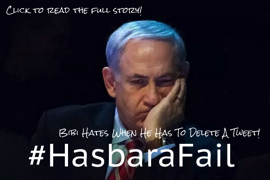



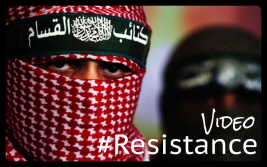

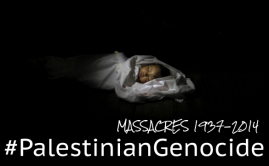





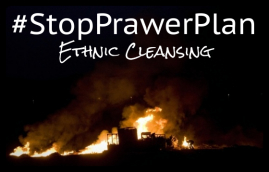

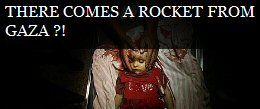








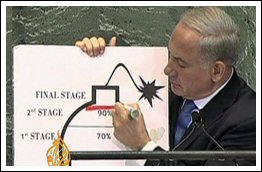
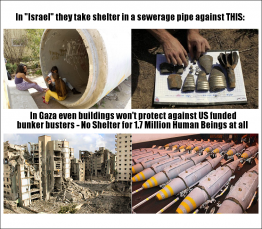





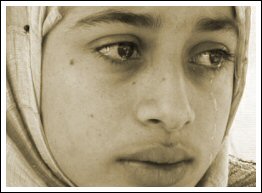
Comments are closed.